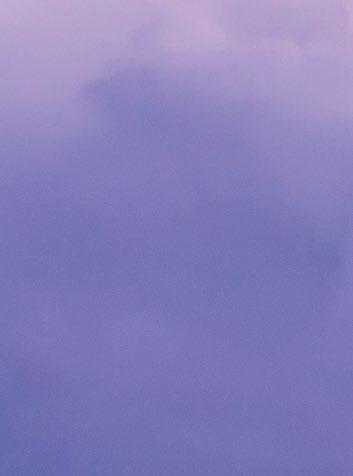
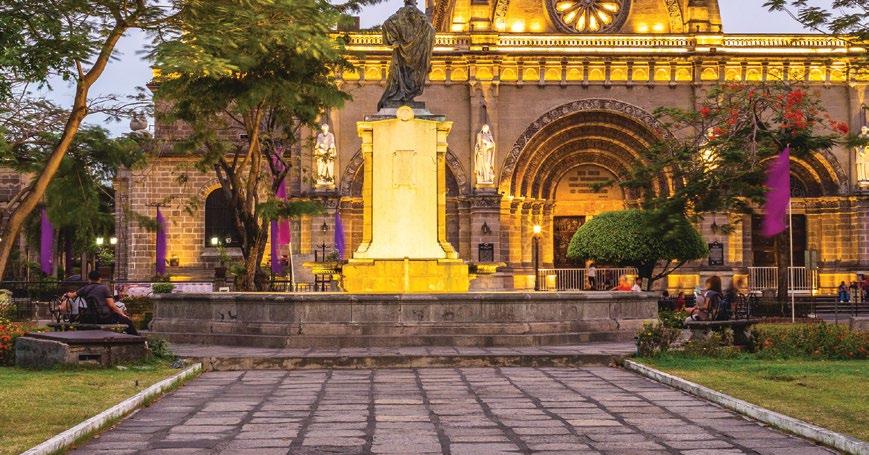
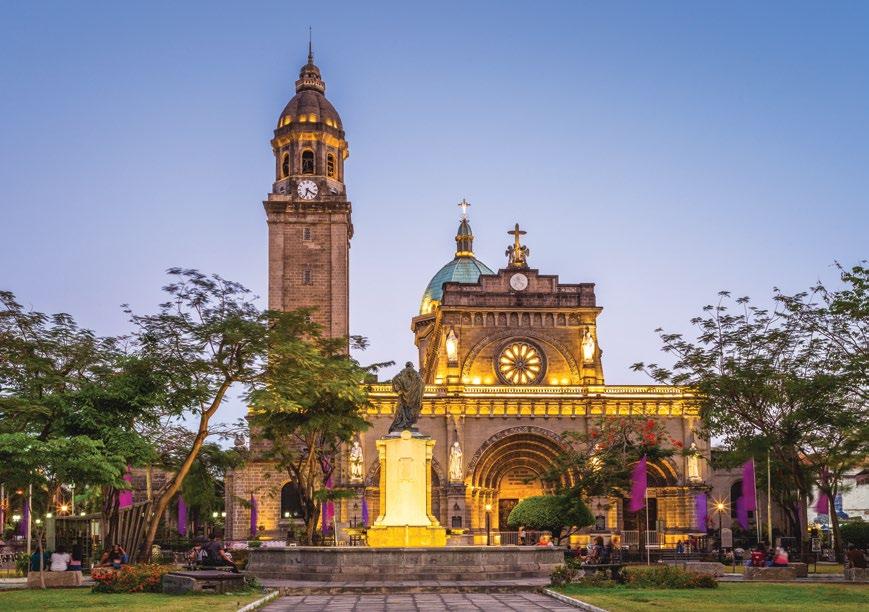



In collaboration with The
Museum Bataan • Corregidor • Manila Victory in the Pacific World War in the Philippines Featuring world-renowned expert on the war in the Pacific James M. Scott Book early and save $1,000 per couple! March 2024 50 •EXPLORING SINCE1972• U S. NAVALACADEMY ALUMNIASSOCIAT I O N AL UMNI TRAVEL YEARS
National WWII
Dear U.S. Naval Academy Alumni and Friends,

Manila, often called the “Pearl of the Orient,” was the star of steamship ads and tourism brochures in the early 1900s. Populated with elegant neoclassical buildings and spacious parks, this spoil of the Spanish-American War developed over the years into a small slice of the United States in Asia, home not only to thousands of service members but also business executives and their families, all of whom enjoyed the relaxed pace of the tropics.
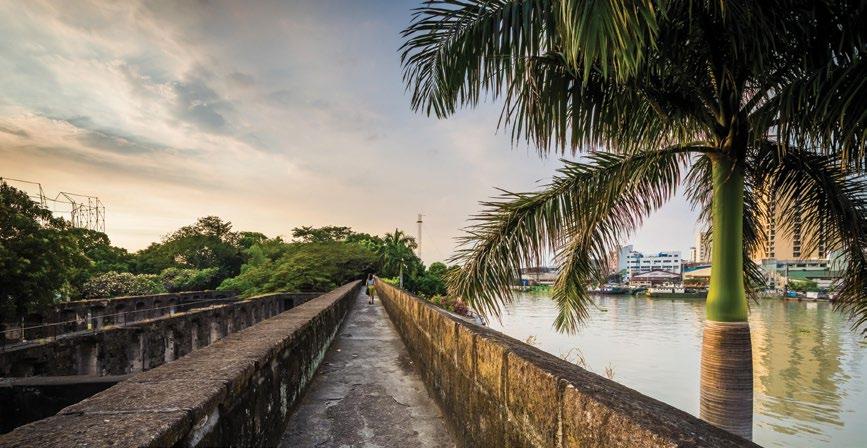
The outbreak of another world war, however, brought an end to the good life. Hoping to spare the capital, General Douglas MacArthur, who lived atop the luxurious Manila Hotel, declared it an open city and evacuated his forces to the Bataan Peninsula and the fortified island of Corregidor. American and Filipino defenders battled the Japanese for months before Bataan fell in April 1942 , followed a month later by Corregidor.
What ensued, for the more than 70,000 captured troops, was one of the greatest tragedies of World War II—the notorious “Bataan Death March,” followed by years in Japan’s wretched prisoner of war camps. In Manila, American and Allied civilians would likewise battle terror and starvation, locked up for more than three years behind the iron gates of the University of Santo Tomas, one of the largest internment camps in Asia.

The February 1945 liberation of Manila by MacArthur’s forces, which most hoped would at long last bring an end to the years of fear and misery, instead only compounded the tragedy. In the only urban battle of the Pacific War, American forces fought block-by-block, home-by-home, and even room-by- room. The final result was the catastrophic destruction of the city and a rampage by Japanese forces that mirrored the Rape of Nanking.

I invite you to join me and your fellow alumni on this amazing journey through a country teeming with World War II heritage.
Sincerely,
FEATURED AUTHOR & HISTO RIAN James M. Scott
James M. Scott, a former Nieman Fellow at Harvard, is the author of Target Tokyo: Jimmy Doolittle and the Raid That Avenged Pearl Harbor, which was a 2016 Pulitzer Prize finalist and was named one of the best books of the year by Kirkus Reviews, The Christian Science Monitor, and Fort Worth Star-Telegram. His other works include The War Below: The Story of Three Submarines That Battled Japan and The Attack on the Liberty: The Untold Story of Israel’s Deadly 1967 Assault on a US Spy Ship, which won the Rear Admiral Samuel Eliot Morison Award. Scott’s fourth book, Rampage, was named one of the Best Books of 2018 by the editors at Amazon, Kirkus Reviews, and Military Times.


In addition, Scott has been interviewed on national television, public radio, and in newspapers ranging from The New York Times to The Washington Post. Scott also was a featured presenter on the Smithsonian Channel’s television series Hell Below and at The 2018 International Conference on World War II. Scott lives with his wife and two children in Mt. Pleasant, South Carolina.
 Amy Garwood Director, Alumni Travel, U.S. Naval Academy Alumni Association and Foundation
Cover Photo: The Manila Cathedral. Photo page 2: View along the Pasig River, at Fort Santiago, Intramuros, Manila. Courtesy of Jon Bilous / Alamy Stock Photo.
James M. Scott is a Pulitzer Prize finalist and the author of several critically acclaimed books of military history.
Amy Garwood Director, Alumni Travel, U.S. Naval Academy Alumni Association and Foundation
Cover Photo: The Manila Cathedral. Photo page 2: View along the Pasig River, at Fort Santiago, Intramuros, Manila. Courtesy of Jon Bilous / Alamy Stock Photo.
James M. Scott is a Pulitzer Prize finalist and the author of several critically acclaimed books of military history.
HEAR THEI R STORIES
Lester Tenney (1920 - 2017)
Lester Tenney joined the National Guard in November 1940. After a year of training, Tenney arrived in the Philippines on Thanksgiving Day, 1941, as a member of the 192nd Tank Battalion. At 5:30 in the morning, on December 8, 1941, Tenney awoke to news that the Japanese attacked Pearl Harbor. Not long after, Tenney experienced the bombing of Clark Field. By the end of December 1941, Tenney was a part of an outnumbered and outgunned American force in a strategic retreat to the Bataan Peninsula. After the surrender of the Americans in Bataan, Tenney was subjected to the “Bataan Death March.” He remembered it not as a march, but rather as “trudging” along. Men were wounded or sick with malaria or dysentery. There was no food or water for the 65-mile march, except for items tossed out by Filipino civilians. Tenney survived the march, spending three years doing forced labor for Mitsui Coal Mining Company. After his release in 1945, Tenney earned business degrees from San Diego State University and the University of Southern California and became a college professor. He sought, and received, official apologies from the Japanese government to the survivors of the “Bataan Death March.”


4 | IN COLLABORATION WITH THE NATIONAL WWII MUSEUM BOOK EARLY AND SAVE! 5
Lester Tenney was a tank commander with the 192 nd Tank Battalion, a survivor of the Bataan Death March, and a dear friend of The National WWII Museum.
LEARN THEIR NAMES
Jose Abad Santos (1886 - 1942)
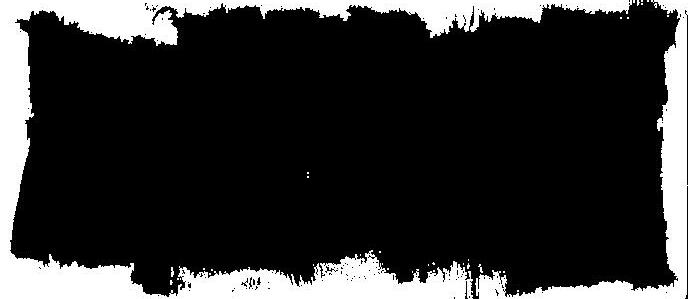
Jose Abad Santos was one of the leading Filipino national figures during the first half of the twentieth century. Serving as Secretary of Justice in the 1920s and 1930s, Abad Santos made it a top priority to establish public trust in the courts. His efforts were noticed in the United States, with President Herbert Hoover nominating him to Supreme Court of the Philippines in 1932. After another term as Secretary of Justice from 1938-1941, Abad Santos returned to the Supreme Court as Chief Justice in December 1941. Following the Japanese invasion, he refused an invitation to join President Manuel Quezon in the United States, remaining behind to serve as the Acting President of the Commonwealth of the Philippines.
The day after the surrender of American forces in Bataan, the Japanese captured Abad Santos. He identified himself, and his captors ordered him to cooperate in bringing about the defeat of the remaining Americans. Despite relentless grilling by the Japanese, he refused, resulting in his execution by firing squad. It was reported that Abad Santos refused the blindfold and cigarette offered by his executioners.

STAND WHERE HISTORY WAS MADE Balanga Elementary School
By April 1942, American forces in Bataan realized the battle was lost. General MacArthur was ordered out of the country on March 11, and General Edward King took command of all American forces in Bataan. By April 8, 1942, General King realized that any further attacks were futile. Faced with a Japanese force capable of bringing in reinforcements and unleashing relentless artillery barrages, King sought terms of surrender from the Japanese commanders. The next day, General King surrendered the remaining 70,000 men under his command to the Japanese. King was brought to Balanga Elementary School, a command post for Japanese General Masaharu Homma, for interrogation. King’s surrender disobeyed orders relayed from General MacArthur, and King fully expected to face a court-martial. The surrender left the island of Corregidor as the last holdout in the Philippines It fell one month later.

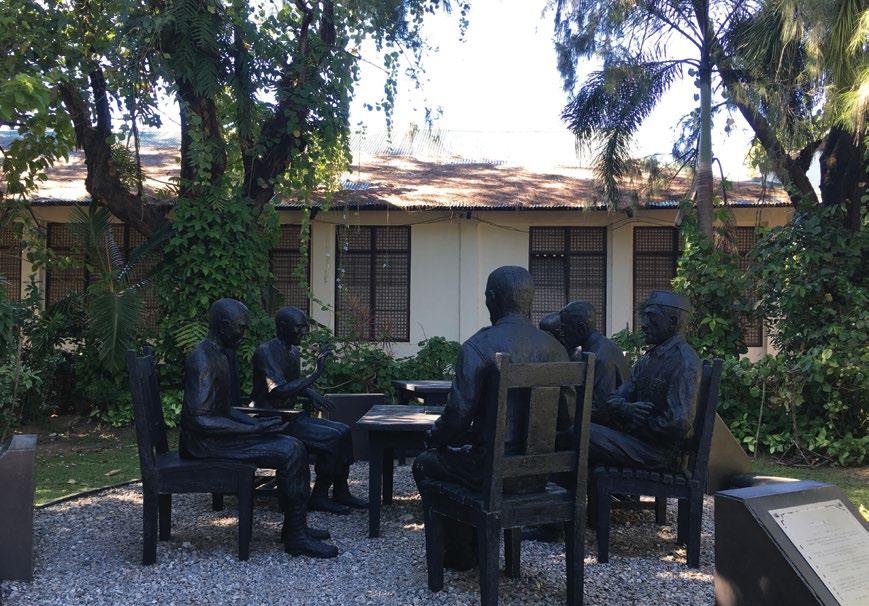
6 | IN COLLABORATION WITH THE NATIONAL WWII MUSEUM BOOK EARLY AND SAVE! | 7
Surrender site, Balanga Elementary School. Courtesy of Nathan Huegen.
US General Edward P. King’s surrender in Bataan. Courtesy of US Air Force.
Photo courtesy of the Abad Santos family.
This map of the Philippines is one of a series of Mem-O-Maps by John G. Drury of the 214th Ordnance Battalion US Government. Mem-O-Maps were produced for military personnel during World War II. Their main purpose was to serve as a souvenir map on which troops could keep track of their “adventures” and movements. The use of cartoons and familiar imagery helped represent the conditions and experiences that the troops must have faced in reality. The legend encouraged servicemen to note where and when they “landed or anchored”, as well as where they stationed while there.

ITINERARY MAP
The Philippines
Flights not included
TOUR INCLUSIONS
• Full-time access to expert historian and author James M. Scott
• Full-time logistical tour manager
• Expert local battlefield guides throughout the itinerary
• Roundtrip Airport Transfers (when arriving and departing on scheduled group tour dates)
• Two nights at the historic Las Casas Filipinas Acuzar Hotel in Bataan
• Two nights at the Clark Marriott Hotel, the only five-star hotel north of Manila
• Two nights at The Manila Hotel, site of General Douglas MacArthur’s pre-war apartment
• One night at the Corregidor Inn
• Private, first-class, air-conditioned motor coach transportation
• Personal listening devices on all included touring
• 8 breakfasts, 5 lunches, and 6 dinners, and 1 reception
• Beer, wine, and soft drinks with included lunches and dinner
• Welcome and Farewell Receptions
• Informative map book including useful maps and archival images to be used throughout your journey
• Personalized luggage tags and customized name badge
LUZON
8 | IN COLLABORATION WITH THE NATIONAL WWII MUSEUM BOOK EARLY AND SAVE! 9
Victory in the Pacific
World War II in the Philippines
Bataan, Corregidor, and Manila

Featuring James M. Scott
$6,499 $5,999* double occupancy, $8,499 $7,999* single occupancy *$129 per person taxes and fees is additional.
Day One : ARRIVALS / TRANSFER TO BATAAN
After morning arrivals into Manila Ninoy Aquino International Airport (MNL), transfer to the province of Bataan. The Bataan Peninsula overlooks the northern entrance to Manila Bay with the island of Corregidor just to the south. For the Americans in Bataan in 1941, the peninsula was designated the site for a major defensive stand in the case of a Japanese invasion. Under War Plan ORANGE-3, which was the product of almost a half-century of planning for conflict with Japan, American forces would concentrate fighting in central Luzon and deny the use of Manila Bay to the Japanese Navy. After arrival to Las Casas Filipinas de Acuzar, enjoy an evening reception and dinner getting to know your fellow travelers.
Accommodations: Las Casas Filipinas de Acuzar (R, D)
Itinerary
Photo: Buildings that were shelled during World War II. Corregidor, Philippines. Courtesy of Patrick Nairne / Alamy.
10 | IN COLLABORATION WITH THE NATIONAL WWII MUSEUM BOOK EARLY AND SAVE! | 11
Itinerary
Itinerary
A few blocks from Santo Tomas, American prisoners of war, many survivors of the Bataan Death March, faced starvation in the old Bilibid Prison. Courtesy of National Archives.

Day Two : BATAAN DEATH MARCH

The morning tour begins at the Bataan Death March Kilometer Zero in the town of Bagac. One of two markers for the start of the “Bataan Death March,” this point marks the start of the march moving west toward Balanga. The group will symbolically walk a one-kilometer stretch of the March, arriving at marker two. Turning south, the group will visit the Kilometer Marker Zero at Mariveles, the starting point at the southern tip of the peninsula. After circling Mount Mariveles, arrive at the Mt. Samat Shrine, which honors the Filipinos and Americans who fell defending the country and serves as a gathering point for commemorations such as the Day of Valor held each April 9. The final stop is the Balanga Elementary School where General Edward King was interrogated underneath the mango trees following the surrender of more than 70,000 men.
Accommodations: Las Casas Filipinas de Acuzar (B, L)
Ammunition, rations, and medical supplies are dropped from a C-47 transport plane to the 38th Division on Bataan–February 16, 1945. Courtesy of The National WWII Museum.

12 | IN COLLABORATION WITH THE NATIONAL WWII MUSEUM BOOK EARLY AND SAVE! | 13
Day Three : CLARK FIELD
The tour departs Bataan and continues to Pampanga Province and the Bamban Museum of History. The museum is a passion project of Rhonie Cauguiran Dela Cruz, who has collected numerous artifacts and items related to World War II in the Philippines. The museum is located next to several caves used by the Japanese during the fighting, with the nearby mountains acting as a refuge of the indigenous Aeta people who waged a guerilla war against the Japanese. Continue to the Capas National Shrine, which marks the location of Camp O’Donnell, the endpoint of the Bataan Death March. The Clark Field Museum continues the story of American involvement in the Philippines to withdrawal of American forces in 1942.
Accommodations: Clark Marriott Hotel (B, L, D)


General Douglas MacArthur, pictured here with his staff at Clark Field, watches American artillery fire on Japanese positions on the eve of the Battle of Manila on January 31, 1945. Courtesy of National Archives.

Itinerary
Itinerary
14 | IN COLLABORATION WITH THE NATIONAL WWII MUSEUM BOOK EARLY AND SAVE! | 15
Sites and attractions inside the Nayong Pilipino at the Clark Field, Philippines. Courtesy of Danilo Pinzon, Jjr / Alamy Stock Photo.
Itinerary Itinerary
Day Four : CABANATUAN
Visit the site of one of the most successful commando raids in US history. Cabanatuan POW Camp held up to 8,000 American prisoners. In January 1945, a group of just over 100 US Army Rangers and 250 Filipino Scouts traveled over 30 miles behind enemy lines to reach the camp. The Scouts conducted a diversionary raid, while the Rangers attacked the main camp. Over 500 Americans were freed at the cost of 2 killed and 25 wounded. Upon returning to the Clark Field area, visit the San Fernando Train station, the location from which the prisoners from Bataan boarded rail cars for Camp O’Donnell.
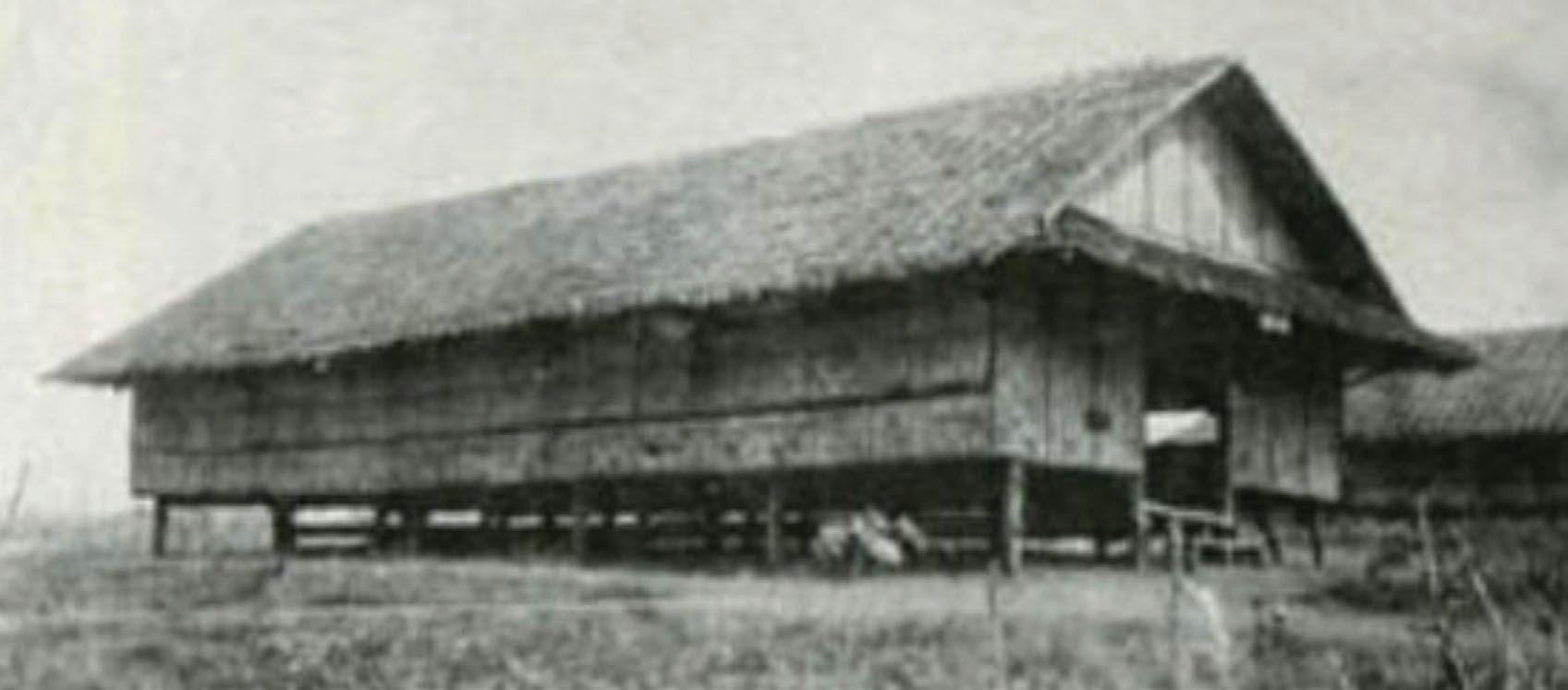
Accommodations: Clark Marriott Hotel (B, L)
Memorial to the troops held captive at the Cabanatuan prisoner of war camp and the Army Rangers who later liberated the camp. Courtesy of AB Forces News Collection / Alamy Stock.
 Cabanatuan Prisoner hut. Courtesy of PJF Military Collection / Alamy Stock Photo.
Cabanatuan Prisoner hut. Courtesy of PJF Military Collection / Alamy Stock Photo.
16 | IN COLLABORATION WITH THE NATIONAL WWII MUSEUM BOOK EARLY AND SAVE! | 17
American women stretch out atop cots in their quarters at the University of Santo Tomas, one of the largest internment camps in Asia. Courtesy of National Archives.

Day Five: THE LIBERATION OF SANTO TOMAS

When Douglas MacArthur fled to Australia, he proclaimed, “I Shall Return.” On October 20, 1944, MacArthur waded ashore on the island of Leyte. By January 1945, he was ready to liberate Manila. On February 3, American forces entered the city and liberated the internees at the University of Santo Tomas, including the nurses known as the “Angels of Bataan.” The liberation of the camp was of the highest priority. Conditions within the camp had deteriorated drastically in the latter months of 1944, and MacArthur feared that the Japanese would execute the prisoners. On a tour of the campus, the university’s archivist will discuss the history of the camp and its rebirth after the war.
Accommodations: The Manila Hotel (B, D)
Some seven hundred internees bed down inside the cavernous Santo Tomas gymnasium. Courtesy of National Archives.

Itinerary
University of Santo Tomas
18 | IN COLLABORATION WITH THE NATIONAL WWII MUSEUM BOOK EARLY AND SAVE! | 19
Itinerary Itinerary
Intramuros, Manila, Philippines

Day Six: THE BATTLE OF MANILA



The Battle of Manila was the most savage urban combat fought by the American forces in the Pacific. The Japanese defenses turned every intersection into a struggle, and every building was a potential strongpoint. As the Americans closed in on the city from the north and south, the Japanese unleashed a fanatical wave of violence against the civilian population. The former “Pearl of the Orient” became a pile of rubble. In the span of one month, the city’s character changed forever. The touring today focuses on the historic center of the city. Through a tour of the Intramuros neighborhood, visit Fort Santiago and the famous walls that appear in many of the battle photographs.
Accommodations: The Manila Hotel (B, L, D)
US General Douglas MacArthur (center) wades ashore during initial landings October 20, 1944 , at Leyte, Philippine Islands. Courtesy of US Army Photo.
Excited American Army nurses, after years of captivity, board trucks for the first leg of a long voyage home on February 13, 1945. Courtesy of National Archives.
An American soldier carries a Filipino refugee, who is suffering from shock, from the Walled City on February 23, 1945
20 | IN COLLABORATION WITH THE NATIONAL WWII MUSEUM BOOK EARLY AND SAVE! | 21
Itinerary Itinerary

Day Seven: CORREGIDOR
From Manila, board a ferry for the fortress island of Corregidor. Serving as the door to Manila Bay, Corregidor was called “The Rock” due to its landscape and immense fortifications. In March 1942, General MacArthur fled Corregidor under orders from President Roosevelt, leaving General Jonathan Wainwright in command. Following the surrender on Bataan, Wainwright and his men held out for another month, facing relentless Japanese bombings. On your tour, visit numerous fortifications and the Malinta Tunnel. With an overnight bag, stay at the Corregidor Inn, allowing additional time for exploration of the area. Return to your room at The Manila Hotel on the following day.
Accommodations: The Corregidor Inn (B, L, D)

FALAISE TOWN
War memorial in front of the ruins of a theater, Corregidor Island, Manila Bay. Courtesy of Look / Alamy Stock Photo.
MacArthur stops to chat with American troops while on an inspection of the recently captured Corregidor. Courtesy of National Archives.
22 | IN COLLABORATION WITH THE NATIONAL WWII MUSEUM BOOK EARLY AND SAVE! | 23
Accommodations
Day Eight: MANILA AMERICAN CEMETERY

On January 2, 1942, the Japanese occupation of Manila began. The Allied forces had left Manila for Bataan. American, British, and other Western civilians stayed behind and were subject to Japanese rule. At first they were confined to their homes awaiting registration. After a period of waiting, all foreign civilians were moved to the University of Santo Tomas, which would now serve as an internment camp. Over 7,000 civilians entered Santo Tomas between 1942 and 1945. Some prisoners transferred to other camps throughout the war. During the tour of the facility, the university’s archivist will discuss the history of the camp and its rebirth after the war. The tour will conclude with a visit to the Manila American Cemetery, the final resting place of 17,058 Americans who lost their lives in the Philippines and throughout the Pacific.
Accommodations: The Manila Hotel (B, D)

Day Nine: DEPARTURES
Transfer to Manila Ninoy Aquino International Airport (MNL) for your journey home or to your next destination. (B)
HOTEL LAS CASAS FILIPINAS DE ACUZAR Bataan, Philippines

Set in a reconstructed 18th-century village with cobbled streets, colonialstyle buildings, and stilt houses, this upscale resort features ornate woodwork and antique furnishings. Room amenities include free Wi-Fi, a flat-screen TV, a mini fridge, and a coffeemaker. Dining options include a formal restaurant and a bar on a private beach. Speckled with classic architecture, grandiose landscapes, and spectacular waterscapes, Las Casas also takes pride in being the only Philippine hotel to have received several international acclaims. Some of its prestigious recognitions include a listing in Historic Hotels Worldwide and being awarded Asia’s most excellent destination in 2017.

Itinerary
Manila American Cemetery and Memorial. Courtesy of Jon Bilous/Alamy.
Hotel Las Casas Filipinas de Acuzar Exterior
Deluxe Room
24 | IN COLLABORATION WITH THE NATIONAL WWII MUSEUM BOOK EARLY AND SAVE! | 25
Deluxe Room
Accommodations
Accommodations


CLARK MARRIOTT HOTEL Mabalacat, Philippines





Experience five-star hospitality at Clark Marriott Hotel. This centrally located hotel in the vibrant central business district of Clark Freeport Zone, Mabalacat, Philippines, offers 260 rooms and suites with contemporary design and deluxe amenities including marble bathrooms, flat-screen TVs, plus minifridges, tea and coffeemaking facilities, and internet access (fee). Enjoy five unique dining experiences and Quan Spa, a full-service, on-site wellness center, a 24/7 Fitness Center, and an outdoor pool.
THE MANILA HOTEL Manila, Philippines
The Manila Hotel is a trip back to pre-war Manila. The hotel is the oldest premier hotel in the Philippines built in 1909 to rival Malacañang Palace. The hotel officially opened on the commemoration of American Independence on July 4, 1912. General Douglas MacArthur made The Manila Hotel his home during his tenure as the Military Advisor to the Commonwealth Government of the Philippines from 1935-1941. Architect Pedro Luna, son of master painter Juan Luna, was commissioned to build a penthouse suite for the General and his family atop the fifth floor. The Japanese occupied the hotel from 1942-1945, setting fire to the structure during the Battle of Manila. The hotel underwent extensive reconstruction after the war and has hosted numerous celebrities including President John F. Kennedy, Sammy Davis, Jr., and John Wayne.
 Goji Kitchen & Bar
The Great Room
Smoki Moto Restaurant
Grand Deluxe Room
The Manila Hotel Lobby
Manila Hotel Exterior
Goji Kitchen & Bar
The Great Room
Smoki Moto Restaurant
Grand Deluxe Room
The Manila Hotel Lobby
Manila Hotel Exterior
26 | IN COLLABORATION WITH THE NATIONAL WWII MUSEUM BOOK EARLY AND SAVE! | 27
PLEASE MAKE MY/OUR RESERVATION FOR THE FOLLOWING DEPARTURE:
March 2024 c $6,799 $6,299* double occupancy c $8,799 $8,299* single occupancy *$129 per person taxes and fees are additional.
Bedding preference: c Double (two beds) cQueen
ALL PASSENGERS MUST TRAVEL WITH A PASSPORT VALID AT LEAST 6 MONTHS BEYOND THEIR RETURN DATE.


Guest 1: Full Legal Name (as it appears on your passport)
Title: ______ First: ______________________Middle: __________ Last: ___________________________
Mailing Address: _______________________________________________________________________

City: ______________________________________________________ State: ________ ZIP: __________
Home Ph: ________/_________________________ Cell: ________/______________________________
Roommate (if different from below): _________________________________________________________
Email Address:_________________________________________________________________________
Birthdate: ______/________/_______ Preferred Name on Badge: _________________________________

Guest 2: Full Legal Name (as it appears on your passport)
Title: ______ First: ______________________Middle: __________ Last: ___________________________




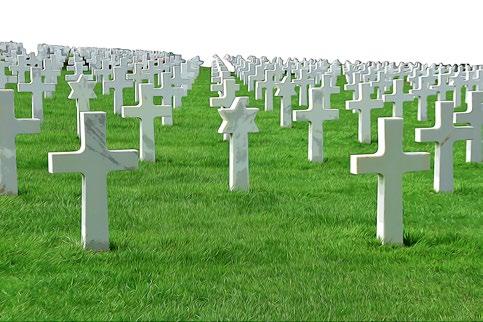

Email Address:_________________________________________________________________________

Birthdate: ______/________/_______ Preferred Name on Badge: ________________________________
DEPOSIT AND FINAL PAYMENT: A deposit of $1,000 per person plus $200 deposit per person for each Pre-Tour Extension. if applicable, is due with your reservation application. Final payment must be received no later than 90 days prior to departure. Applicable taxes and fees will be added to the final invoice. Please reserve ______ space(s). Enclosed is my/our deposit for $_______________.

Deposits and all other payments may be made by personal check, American Express, MasterCard, Visa, and Discover.




c Accept my check made payable to The National WWII Museum.
Charge my: c MasterCard c Visa c American Express c Discover
Signature as it appears on card:____________________________________________________________
Card#: ________________________________ CVV/Security Code: _______ Expires ________/________
Terms and conditions. By
Naval Academy
IN THE PACIFIC: WORLD WAR II IN THE
VICTORY
PHILIPPINES
reservation
payment, the guest/travel agent acknowledges that they are aware of and will comply with our terms and conditions. We reserve the right to change our terms and conditions at any time, so scan the QR code for complete details, additional information, and updates. Reserve
RESERVE ONLINE: Click here to book online! 1 RESERVE SEND TO: The National WWII Museum Travel 945 Magazine Street New Orleans, LA 70130 2 CALL OR EMAIL: Toll Free: 1-877-813-3329 x 257 Fax: 1-504-504-0995 Email: travel@nationalww2museum.org 3 View our Terms 28 | VISIT US AT WW2MUSEUMTOURS.ORG 28 | VISIT US AT WW2MUSEUMTOURS.ORG
6, 2000 $2
Quick Facts
THE NATIONAL WWII MUSEUM EDUCATIONAL TRAVEL PROGRAM TRAVEL WITH EXPERTS 5 Tour Programs operated on average per year, at times accompanied by WWII veterans all theaters of World War II Museum
30 top historians with published books and documentary credits 174 47 26 #1 ATTRACTION IN NEW ORLEANS 16 VISIT Overseas American
Commission cemeteries & memorials plus museums on our itineraries &189 BOOK EARLY AND SAVE! | 29
confirming the
with
now! Three ways to secure your spot.
8 million+ visitors since the Museum opened on June
billion+ in economic impact
160,000+ active Museum members 8,000+ travelers, representing every US state 625,000+ social media followers
ww2museumtours.org
Battle Monuments


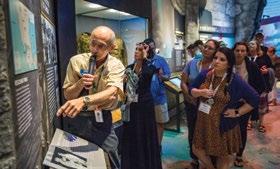



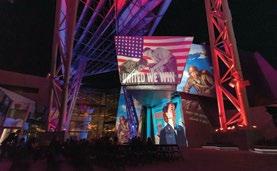
Early Access to Galleries Expressions of America All-New Sound and Light Show Out of the Vault Museum Experience June 6–9, 2024 Experience the #1 Attraction in New Orleans on this customcurated, four-day group tour to The National WWII Museum Luxury Accommodations at The Higgins Hotel For tour dates and more information Visit ww2museumtours.org • Call: 1-877-813-3329 x 257 RESERVE 50 EXPLORING S NCE1972 U S NAVALACADEMY ALUMNIASSOCIAT I O N ALUMNI TRAVEL YEARS











 Amy Garwood Director, Alumni Travel, U.S. Naval Academy Alumni Association and Foundation
Cover Photo: The Manila Cathedral. Photo page 2: View along the Pasig River, at Fort Santiago, Intramuros, Manila. Courtesy of Jon Bilous / Alamy Stock Photo.
James M. Scott is a Pulitzer Prize finalist and the author of several critically acclaimed books of military history.
Amy Garwood Director, Alumni Travel, U.S. Naval Academy Alumni Association and Foundation
Cover Photo: The Manila Cathedral. Photo page 2: View along the Pasig River, at Fort Santiago, Intramuros, Manila. Courtesy of Jon Bilous / Alamy Stock Photo.
James M. Scott is a Pulitzer Prize finalist and the author of several critically acclaimed books of military history.
















 Cabanatuan Prisoner hut. Courtesy of PJF Military Collection / Alamy Stock Photo.
Cabanatuan Prisoner hut. Courtesy of PJF Military Collection / Alamy Stock Photo.




















 Goji Kitchen & Bar
The Great Room
Smoki Moto Restaurant
Grand Deluxe Room
The Manila Hotel Lobby
Manila Hotel Exterior
Goji Kitchen & Bar
The Great Room
Smoki Moto Restaurant
Grand Deluxe Room
The Manila Hotel Lobby
Manila Hotel Exterior


















